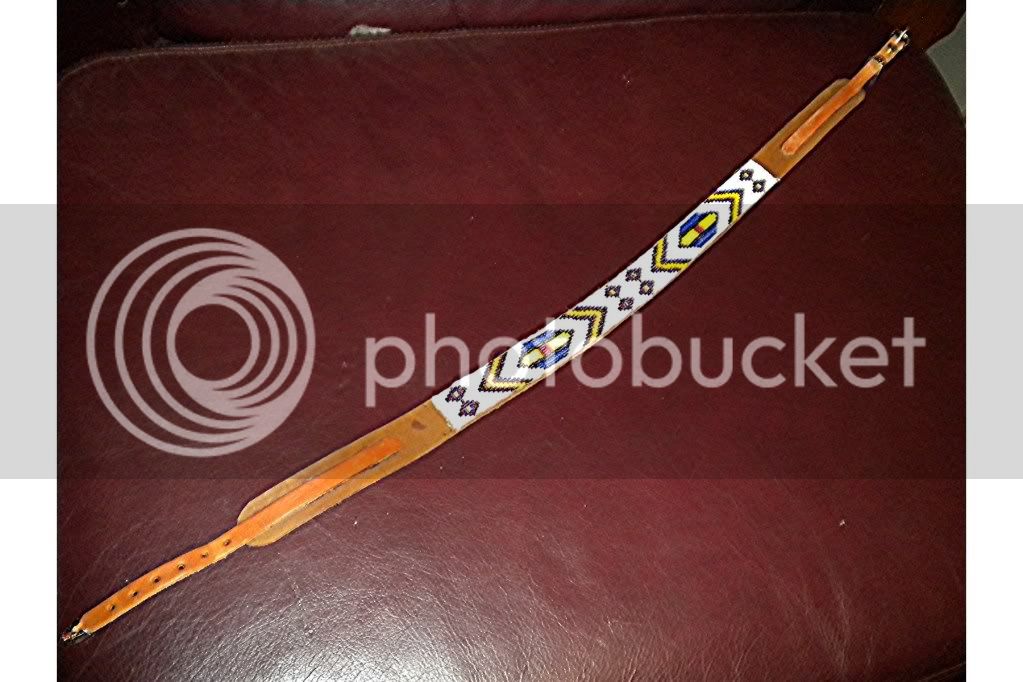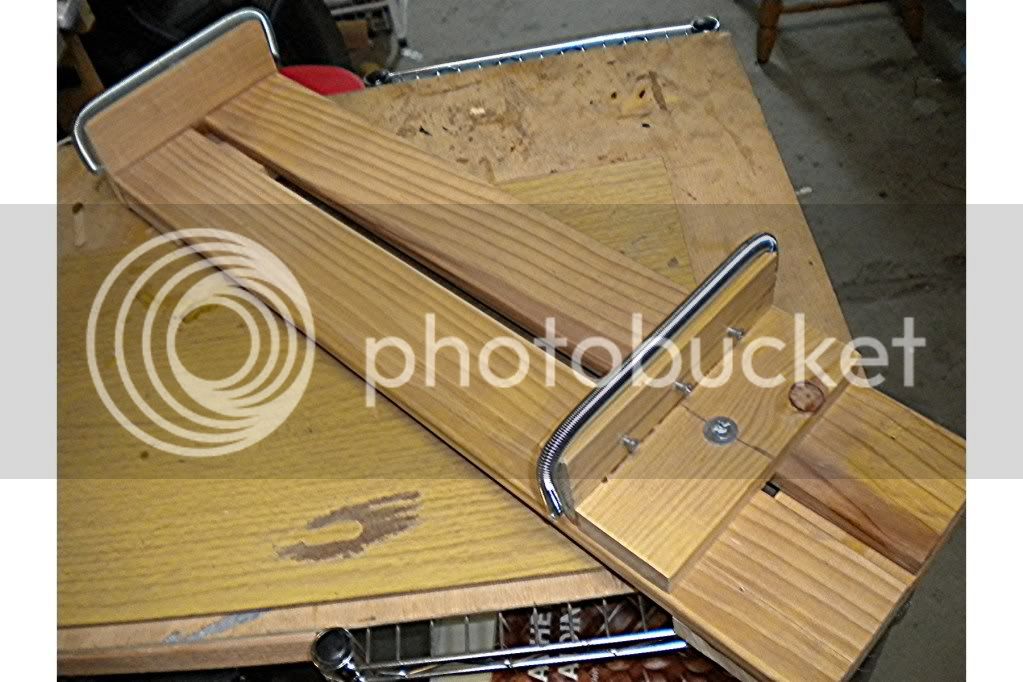Sorry to be slow responding:
I use mostly the Old Time Color beads from Crazy Crow. Most of my beadwork is pre-1850 so I use either 8/0 pound beads or 10/0 seed beads. Despite the oft quoted "fact" that seed beads were not used prior to 1850 in the west there is in fact plenty of evidence for seed beads also being available and used although pound beads were more often used. For some of the beaded "fringe" I also use some larger beads in 4-5mm size. When beginning doing beadwork or doing it on a budget there are also the less expensive Czech beads and by being selective with the colors you can get some nice looking work.
For special projects or repairs of original gear I also use some original 19th Century beads.
Sources:
Crazy Crow usually carries some
www.beadmatch.com
www.shipwreckbeads.com
For info on how-to bead - start with here”
http://www.nativetech.org/glasbead/glasbead.html
I use the lane (aka lazy) stitch and the appliqué stitch - appliqué is mostly used for floral style typified by the Metis beadwork.
There are also a bunch of books and DVD’s on how-to bead and IMO it never hurts to read and compare as much as possible.
For info on pre-1840/1850 beadwork see the article in Book Of Buckskinning vol 7 by Allen Chronister - it's full of good info including a list of books that include original early western beadwork, most of which is not like the later beadwork patterns or colors so commonly seen. It also includes info on the different types of beading used, with some info on tribal styles.
For info on colors used pre-1840 also see the trade lists here:
http://www.xmission.com/~drudy/amm.html
Colors were more limited in the early days and the two most popular colors by far were various shades of medium to dark blue and shades of white - both chalk and gloss.
For backing leather I use only brain tan or the German Tan from Crazy Crow is also good and is cheaper, especially the seconds. With either type pre-stretch it and also use the firmer parts with the least stretch - some braintanners will do hides with a firmer less stretchy "body" on request.
Cloth was often used as well both as backing and as a decorative element. Blue and Red stroud were most common, but for backing the long legging and shoulder/arm strips for instance, hemp or linen canvas weight cloth was also used.
Also keep your smaller scraps of leather and sew them together with the baseball stitch - lots of old beadwork was done on such scrap.
When doing the lane stitch I lay my lines out with a red stitch marker or a red water soluble ink pen. Once I get the basic lay out is done I then use masking tape as a border stop along the edge.
For thread I often use the narrow imitation sinew and split it in two. I use this for two reason, strength and also so my work can not be pawned off as original work. For splay projects or on request I also use real sinew or silk thread in a button weight or a combination of the two. Cotton wrapped poly thread in button hole or carpet weight thread is another option. I've never used the Nymo beadwork thread so can't offer an opinion. Light weight linen or hemp thread can also be used but I've had strength/wear problems with it.
Using real sinew is a somewhat different process since the hard tip of the sinew is your "needle" and you use an awl ”“ I’d recommend to learn with thread first and then tackle that process.
For needles most folks use the sharps needles, but I found that the size seven CS Osborne harness needles work better for me. They are a bit longer and also last longer - you can order them here:
http://www.campbell-bosworth.com/catalog/product_info.php/cPath/1_16/products_id/945
For sewing the leather together glover's needles are nice and I generally use 3 cord linen or similar weight hemp thread .
To see a bunch of beadwork online two of my favorite sites are although knowing what to look for as to time period will take some pre-knowledge :
http://anthro.amnh.org/anthropology/databases/north
http://www.splendidheritage.com/nindex.html
Colin Taylor has published several books such as the Plains Indians, Yupika, and Buckskin and Beadwork that include several pre-1850 pieces.
Arts of Diplomacy ”“ a book on the L & C Expedition also has several early pieces.
Bottom line ”“ enjoy yourself and don’t be afraid to tear out and re-start if need be ”“ even after 50 years of beading I still do it. Also with the early beading styles and beads you won’t normally get the real flat and even look that later beadwork of the Rez period and later often shows. Looking at images of early beadwork will illustrate this and nobody is perfect anyway.
Hope that helps and I look forward to seeing some beadwork from ya’ll!
any questions ask away and I'll answer ASAP.
PS there are some examples published of NW Coast beadwork that often uses a combination of pound beads and dentalium shell beads.






